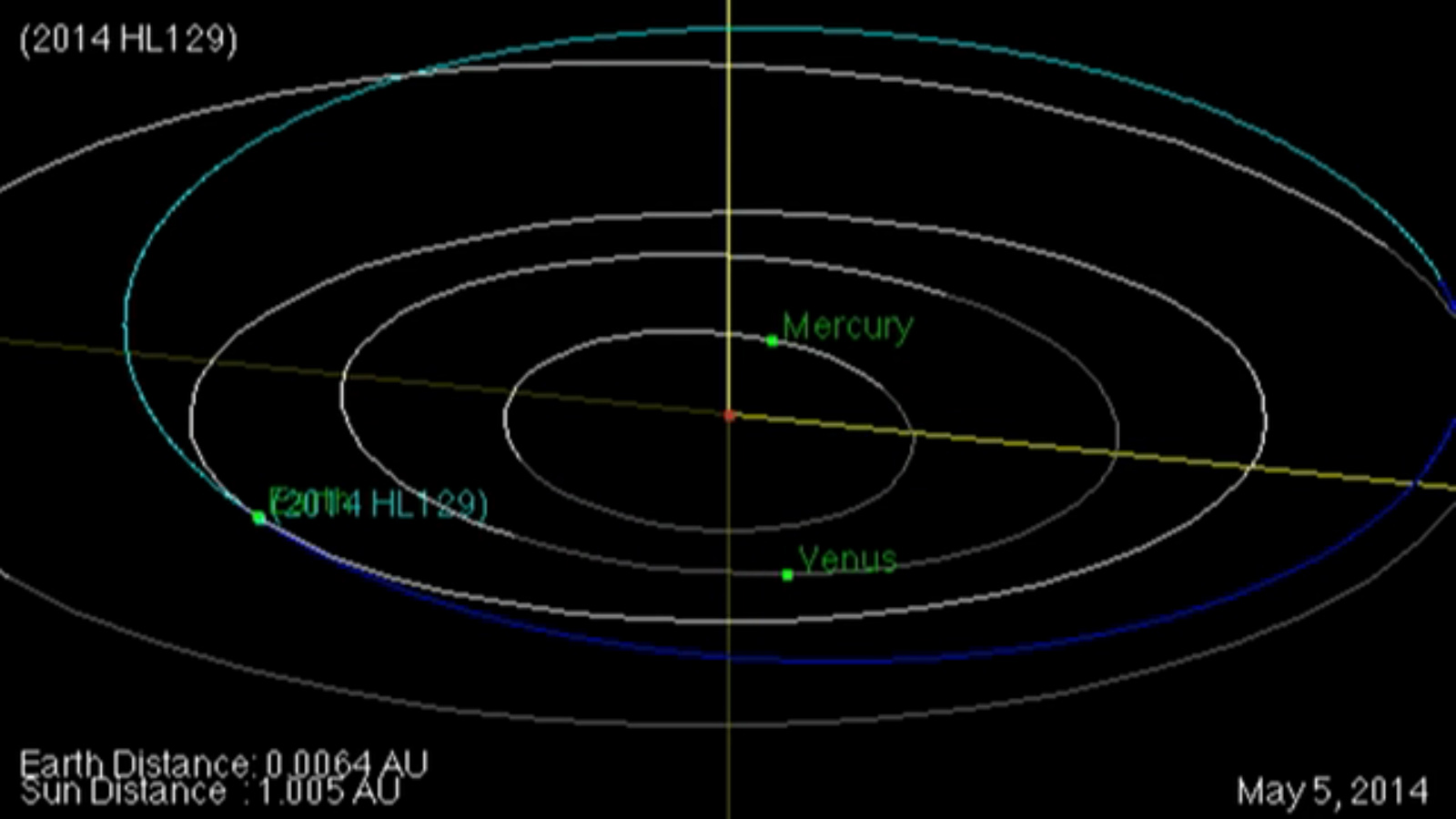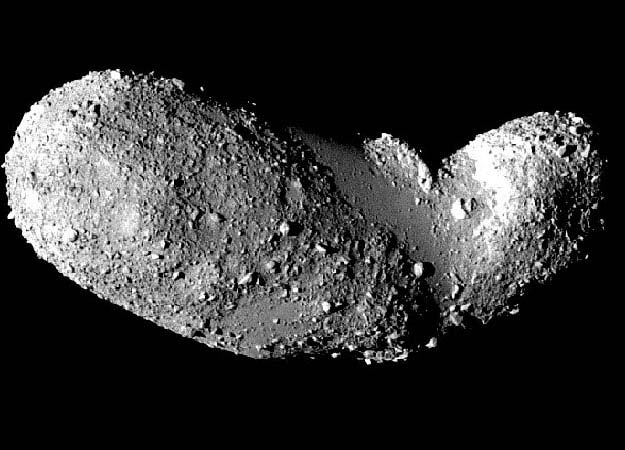Bus-Size Asteroid Buzzes Earth, Comes Closer Than the Moon

A small asteroid about the size of a city bus zipped by Earth at a range closer than the moon early Saturday (May 3), but posed no threat to our planet.
The newly discovered asteroid 2014 HL129 came within 186,000 miles (299,338 kilometers) of Earth when it made its closest approach on Saturday morning, which is close enough to pass between the planet and the orbit of the moon. The average distance between the Earth and moon is about 238,855 miles (384,400 km).
You can watch a video animation of asteroid 2014 HL129's orbit around the sun on Space.com. The asteroid is about 25 feet (7.6 meters) wide, according to NASA's Asteroid Watch project based at the agency's Jet Propulsion Laboratory in Pasadena, Calif. It made its closest approach to Earth at 4:13 a.m. EDT (0813 GMT).
Saturday's close shave by asteroid 2014 HL129 came just days after its discovery on Wednesday, April 28, by astronomers with the Mt. Lemmon Survey team, according to an alert by the Minor Planet Center, an arm of the International Astronomical Union that chronicles asteroid discoveries. The Mt. Lemmon Survey team scans the night sky with a telescope at the Steward Observatory atop Mt. Lemmon in Arizona's Catalina Mountains.
NASA scientists and researchers around the world constantly monitor the sky for potentially dangerous asteroids that could pose a risk of impacting the Earth.
Email Tariq Malik at tmalik@space.com or follow him @tariqjmalik and Google+. Follow us @Spacedotcom, Facebook and Google+. Original article on Space.com.
Breaking space news, the latest updates on rocket launches, skywatching events and more!

Tariq is the award-winning Editor-in-Chief of Space.com and joined the team in 2001. He covers human spaceflight, as well as skywatching and entertainment. He became Space.com's Editor-in-Chief in 2019. Before joining Space.com, Tariq was a staff reporter for The Los Angeles Times covering education and city beats in La Habra, Fullerton and Huntington Beach. He's a recipient of the 2022 Harry Kolcum Award for excellence in space reporting and the 2025 Space Pioneer Award from the National Space Society. He is an Eagle Scout and Space Camp alum with journalism degrees from the USC and NYU. You can find Tariq at Space.com and as the co-host to the This Week In Space podcast on the TWiT network. To see his latest project, you can follow Tariq on Twitter @tariqjmalik.

